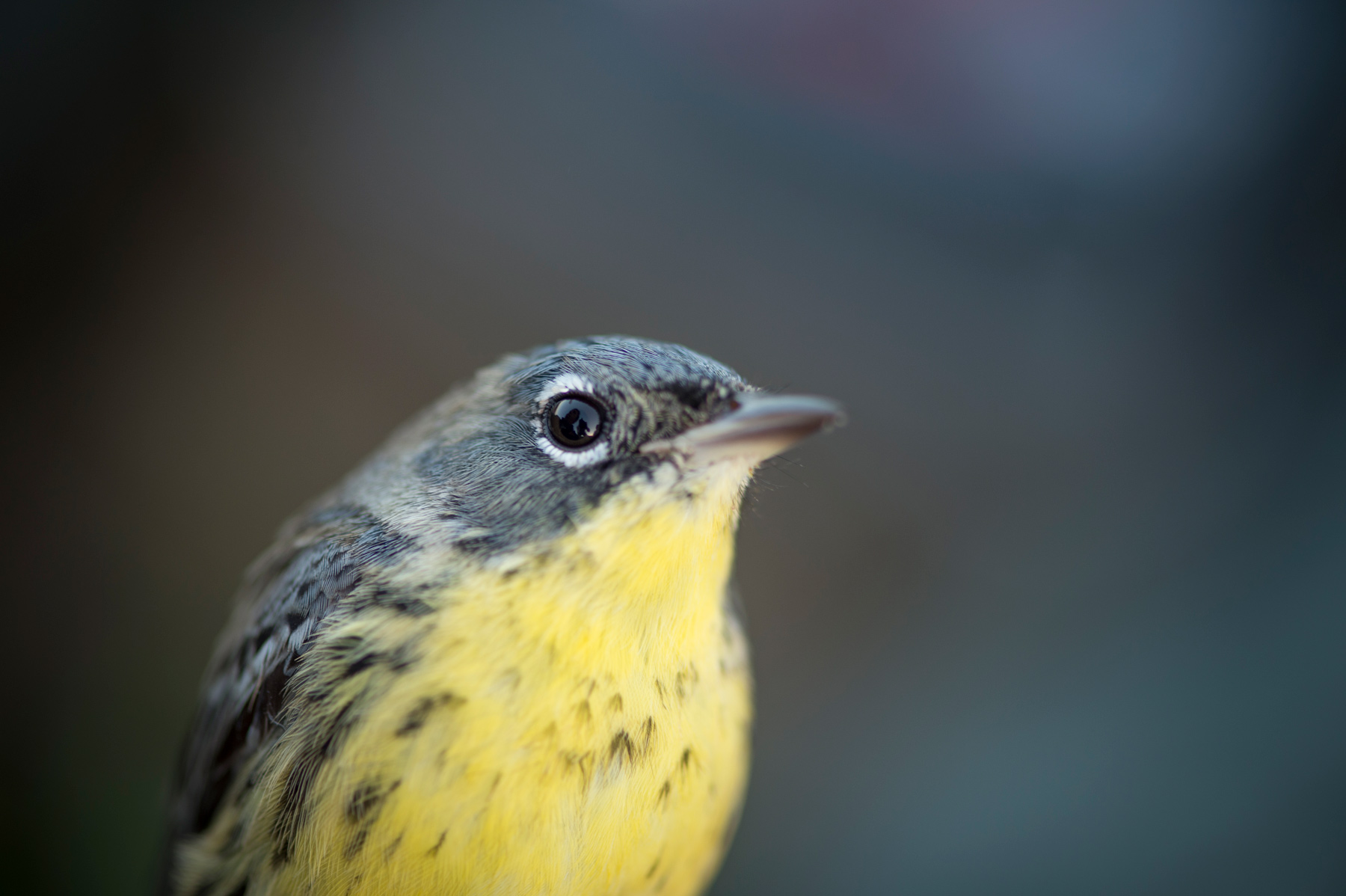Species Profile: Kirtland's Warbler

The Kirtland's warbler is an endangered bird that nearly went extinct. In fact, in 1987 there were only 167 singing male birds left in the wild! The Kirtland’s warbler population has since increased due to an intensive management effort, but a lot of work still needs to be done to guarantee the survival of this species. The population size of the Kirtland's warbler depends on reproductive success, whether the birds are able to reproduce. It also depends on the survival of individual birds during breeding season, winter and migration.
Breeding
Kirtland's warblers are picky birds. Each spring, they migrate from the Caribbean to large, dense clusters of young jack pine trees in Michigan, Wisconsin and Ontario. They will only build nests in pine stands that are between 5 and 15 years old.
In the past, fire would destroy older pine stands making way for younger seedlings to grow. Too much fire would mean the remaining pine stands would be too young to provide good habitat for the warblers. Too little fire would mean the pine stands would be too old for good warbler habitat. Forest management techniques in recent years have prevented these fires from regenerating jack pine stands, resulting in a lot of older trees.
To help prevent the extinction of Kirtland's warblers, wildlife managers in northern Michigan have selectively cut jack pine stands, ensuring that there are plenty of acres of young jack pine trees for the Kirtland's warblers to breed. While these birds are still limited by the lack of fire in pine forests, jack pine management has helped the species’ numbers grow.
The reproductive success of Kirtland's warblers is also made difficult by the brown-headed cowbird. Cowbirds are a brood parasite, which means they lay their eggs in other species' nests. If a single cowbird egg is laid in a Kirtland's warbler nest, the warbler will not be able to successfully raise any chicks of its own. Because of this, cowbirds are considered to be one of the reasons for the Kirtland's warbler decline. Efforts to manage (decrease) the number of cowbirds have helped to reduce brood parasitism and have played a key role in the recovery of the Kirtland's warbler.
Overwintering
Using light-level geolocator technology, scientists have traced the entire wintering population of Kirtland's warblers to a small region in the Caribbean Sea—the Bahamas, and Turks and Caicos Islands. These islands provide important scrub habitat that warblers need to survive. Scrub habitat includes bushes, shrubs and very few trees. Scrub habitats on these islands are made by extreme weather events, such as hurricanes. Strong winds from these storms limit the growth of trees and allow shrubs and bushes to thrive.
Unfortunately, the amount of good scrub habitat has been reduced by an increase in human development, such as buildings and roads. In some areas, a unique management plan to improve scrub habitat has been suggested—introducing goats. Because goats eat just about anything, it is expected that they will help maintain scrub habitat, giving Kirtland's warblers an ideal place to winter.
Migration
Kirtland's warblers are too small to carry GPS tags. They weigh only about .5 ounces (14 grams), have a wingspan of 7.5 inches (19 centimeters) and are 5.5 to 5.9 inches (14 to 15 cm) in length. Little is known about the threats they face during their spring and fall migrations. Bird-banding data suggests that nearly half of the Kirtland’s warbler population (44 percent) is killed during migration.
Observations of other migratory birds, including other species of warbler, provide clues to the threats that Kirtland's warblers may face while migrating. By far, predators—most importantly, the domestic cat—pose the most danger to migratory birds. Apart from habitat loss, free-roaming cats, whether those that owners let outside or feral stray cats, are the number one cause of bird deaths. It is thought that every year more than one billion birds are killed by free-roaming cats. Reducing the number of outdoor cats would greatly increase the chances that songbirds successfully migrate.
Large, manmade structures, such as wind turbines and the windows of buildings, are another hazard for migratory birds. Millions of migrating birds die every year from hitting these structures while traveling south and north. One way to help reduce the number of birds that are killed by buildings is to use bird-safe glass. Bird-safe glass has embedded patterns that birds can see, which lets them know that there is something they need to fly around.
Buildings can also pose an additional threat: light pollution. At night, lights can confuse birds. Many migrating birds will circle artificial lights to the point of exhaustion and sometimes even death. A push to reduce light pollution by turning off or blocking lights in tall buildings at night during peak migration has successfully reduced this threat, but much more needs to be done.
Clearly, the Kirtland's warbler is a species that needs a lot of help from people to survive. Take a moment to think about how people have contributed to its decline. What steps would you take to help this picky bird avoid extinction?
Explore how the environment influences Kirtland's warbler populations.
